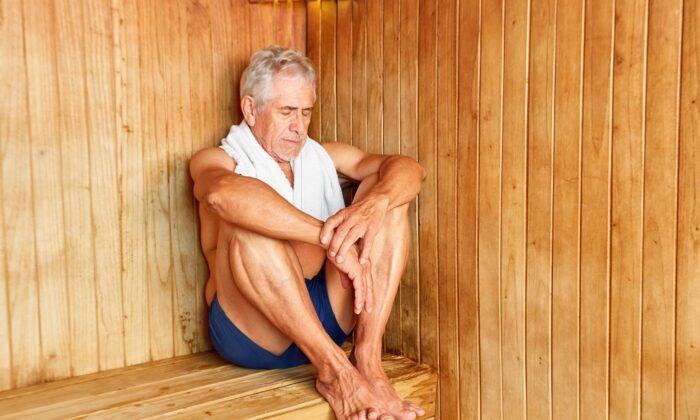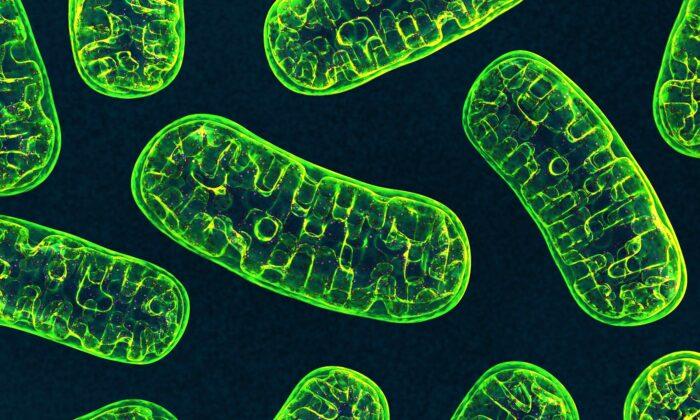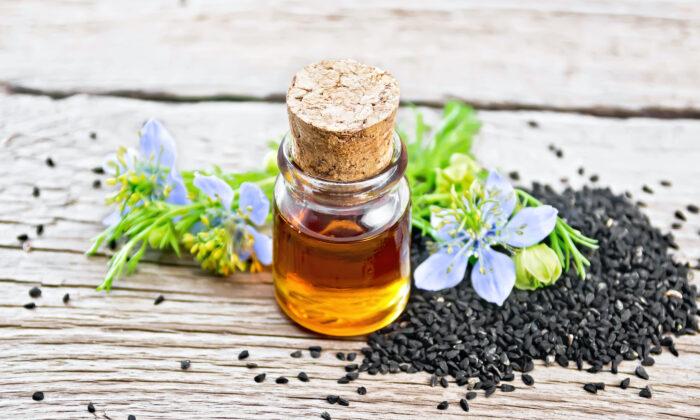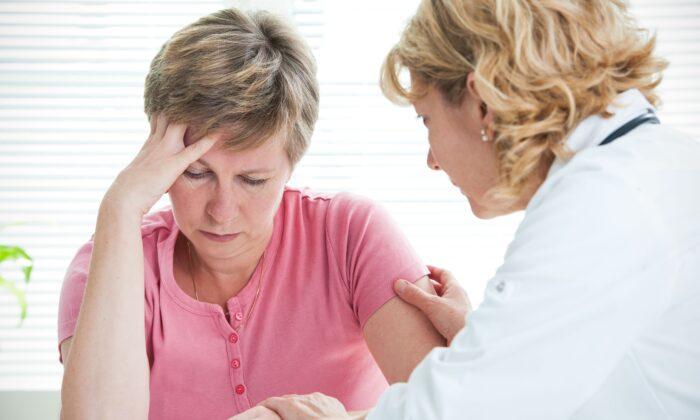Important aspects of our immune system have gone overlooked within the current dominant practice of allopathic medicine. One of these aspects is fever. Sometimes we need a different way of looking at something to recognize its value.
So with that in mind, let’s look at what an “externally-induced fever” can do for the body, according to modern science. Understanding this might help us pause before seeking treatments to suppress a fever that is not actually threatening our well-being. In fact, it could be preserving it.
So what do I mean by an externally-induced fever? It’s a fever that comes from outside the body rather than inside. Basically, it means we heat up the body, like in a sauna. Remarkably, these two types of fever have very similar impacts on our health. And these benefits are something people have known for generations.
Immunity: Learning a Disease
We have two broad categories to our immune systems: the acquired and innate. The acquired immune system comes into play after a new infection comes on the scene and “surprises” us. Since this new bug has never been encountered before, our immune system has not had time to recruit immune cells to mount an adequate defense. However, once the infection has run its course, the acquired immune system will remember that particular pathogen and we will be protected for many years into the future.So why do we get that feeling of malaise, fatigue, fever and all the other symptoms of a cold and flu? Those symptoms come from the innate immune system. This branch of the immune system is not specific to the particular pathogen and basically reacts to certain pathogen-associated molecular patterns (PAMPs). The immune system recognizes a PAMP as dangerous and immediately mounts an attack—regardless of whether it is familiar with the pathogen or not.
Some PAMPs are recognized sequences of RNA in COVID-19 and influenza viruses, as well as unique components in the cell walls of yeasts and chains of sugars strung together outside pathogenic bacteria, called lipopolysaccharide.
These unique microbial identifiers are all recognized as PAMPs by our innate immune system.
An Unknown Virus
I need to preface this discussion with a little science, so bear with me.There are no randomized, double-blind, placebo-controlled trials specifically dealing with treatments for COVID-19 though one study did find the flu vaccine could make one more susceptible to the virus.
These studies take time and while they are sure to emerge shortly, the rapid development of this pandemic has just not given us this time. Further studies are needed for everything specifically relating to COVID-19.
But that doesn’t mean there are not some important lessons we have learned generally about dealing with viruses or how our immune system functions.
One of our primary defenses against viruses is Type 1 interferon, a cytokine, or immune protein. It is responsible for activating our non-specific innate immunity when the genetic material of PAMPs, such as COVID-19, are identified. When infected cells secrete interferon, this protein signals the healthy cells around the infected cell to prepare to take on the invader.
We know of many similarities between COVID-19 and the other novel coronaviruses of the 21st century such as SARS and MERS. In a review performed in March 2020 at Chulalongkorn University in Thailand, researchers found that this group of viruses actually interfered with activation of our innate immune systems by suppressing interferon secretion early in the course of disease.
This means no immediate immune response and all those symptoms created by our immune response. This explains the high rate of asymptomatic carriers, those that don’t show symptoms, who later experience a full-blown case of the disease. It also explains the overall mild nature of the disease in children and young adults.
Children and young adults tend to have a more aggressive innate immune response but this response wanes with age and chronic disease. An analysis of MERS patients who died revealed they had a significantly lower innate immune response due to lower interferon levels than patients who recovered.
Hot and Cold
One of the key features of our innate immune response is increased body temperature or fever. Fever burns off pathogens. Fevers of 39.5C (103.1F) were linked to better survival and quicker recovery. Researchers found that a fever could activate monocytes.So when your immune system mounts that fever early in the course of an infection, it is doing exactly what it has been designed for millions of years to do. That means the best thing you can do is not get in its way.
There are always exceptions to every statement and only you and your doctor will know the nuances of your particular metabolism. There are specific signs and symptoms associated with fever which require immediate medical attention. What I am trying to dissuade you from is the knee jerk reaction to treat the fever. You’re not necessarily treating the illness, instead you are blunting your immune response. In most cases, fever is one of the best tools in our immune toolbox.
Unfortunately, many of us have been conditioned to immediately reduce our temperatures at first sign of an increase. We’ve even included the quasi-medical terminology of “low-grade fever” which generously includes any temperature deviation between 98.7F up to 100.4F. The accepted medical definition of a fever is a body temperature of greater than 100.4F. Normal body temperature is defined as a static 98.6F but this is a dynamic number which may deviate for a variety of reasons—an activated immune system being only one possible explanation.
Sauna Science
That said, just as fever is a critical way your body fights infection, the Finnish sauna and its other cultural equivalents reveal another treatment course, though one largely unavailable to people in the United States, especially during the pandemic. (Hot baths can work as well, but because water is on the skin, getting it too hot can cause burns. This makes it is not as effective at raising body temperature safely.)This practice involves spending time in an extremely hot sauna with temperatures upwards of 200F followed by a rapid cool down by plunging into cold water or even snow in some cases.
This practice has long been considered beneficial to health in the Finnish culture. While similar practices are also followed in Russia, Japan, and Korea, I am focusing on the Finnish sauna simply because of its high rate of use by its people. In a nation of about 5.5 million people, there are roughly 2 million saunas.
A thirty-year-old study from the Annals of Medicine looked at sauna bathing and the incidence of common cold, which non-COVID-19 varieties of coronavirus are frequently responsible for. They found that the group of people who regularly used saunas had half the incidence of the common cold over the three month period that they followed them for in the study than the non-sauna users.
In a study from 1999 in the Journal of Applied Physiology, researchers found that acute cold exposure also had an immune-stimulating effect. That effect was specifically seen on monocytes, NK cells and other immune cells and proteins that are all known to be key players in the innate immune response.
Looking at the latest COVID-19 data, Finland has far more favorable COVID-19 numbers than its other Nordic counterparts of Sweden, Norway, and Denmark. Finland’s total COVID-19 caseload per million people at nearly half and its death rate per million people is nearly one third when compared to other Nordic countries. Interestingly, when we look at these same epidemiological metrics for Russia, Japan, and Korea, they are also more favorable than their geographic neighbors.
My comparison here is far from a scientific study. There are many confounding factors that could explain these differences. But it is food for thought. The scientific data on immune response from increasing core body temperature clearly shows improvements in the particular immune cell which the COVID-19 virus is known to suppress early in its disease course. Whether that increase in core temperature is produced internally from fever or externally from sauna, the effect is essentially the same. When compounded by the additional immune-stimulating effect of acute cold exposure, the impact of spurring the immune system to action can be even more pronounced.
So the next time you think you may be coming down with something, don’t fight against your own immune system. That fever may actually be helping you. From a preventative lifestyle perspective, you can replicate this elegant immune response. This seems to be something the Finns, Russians, Japanese, and Koreans have known for centuries. This might even partly explain why many of us crave a hot bath when we’re under the weather.






